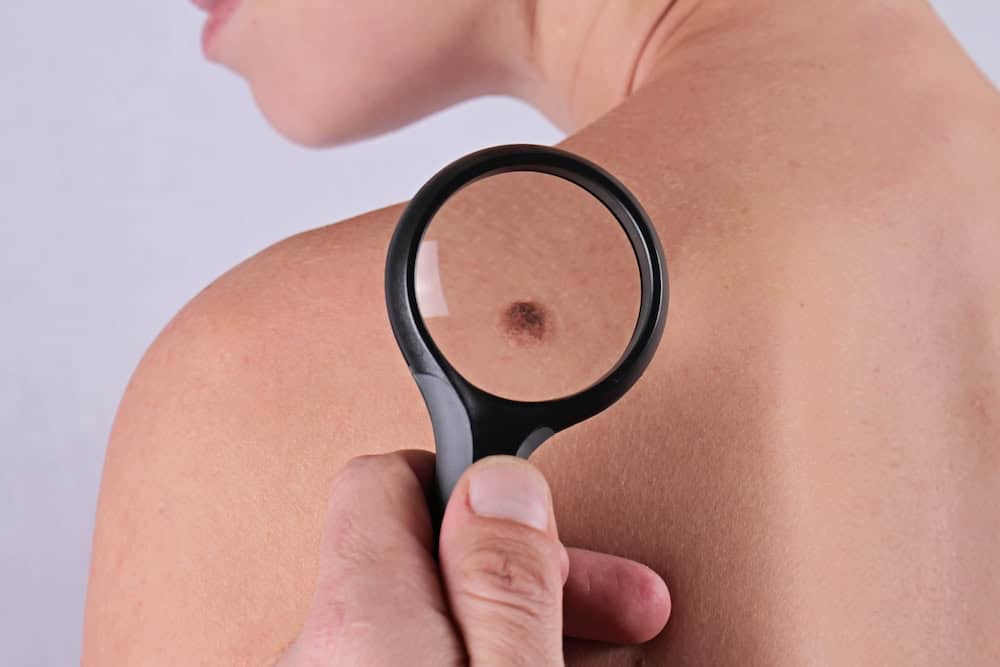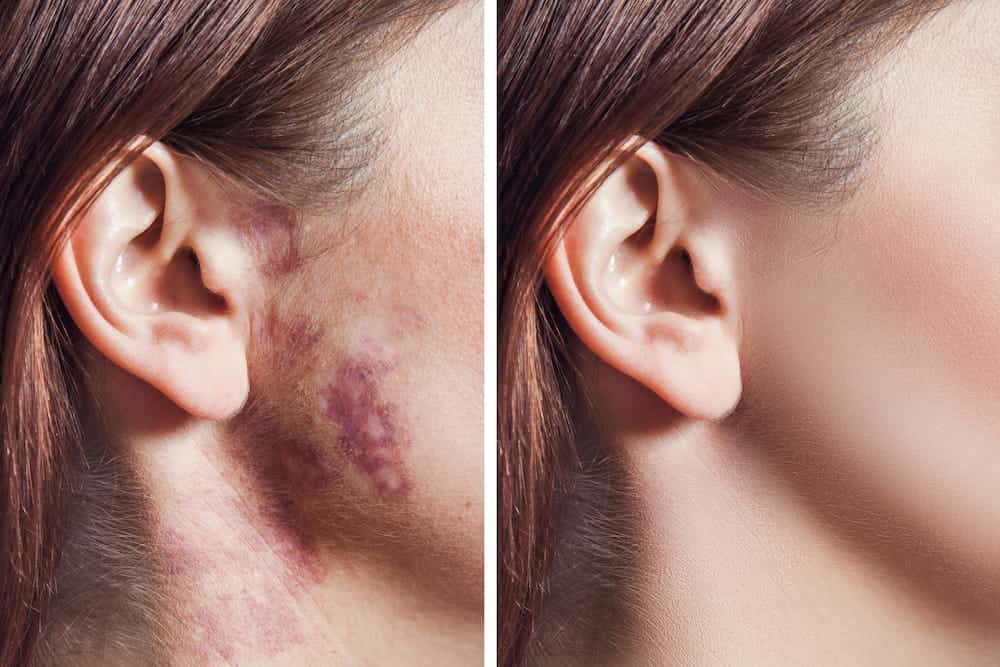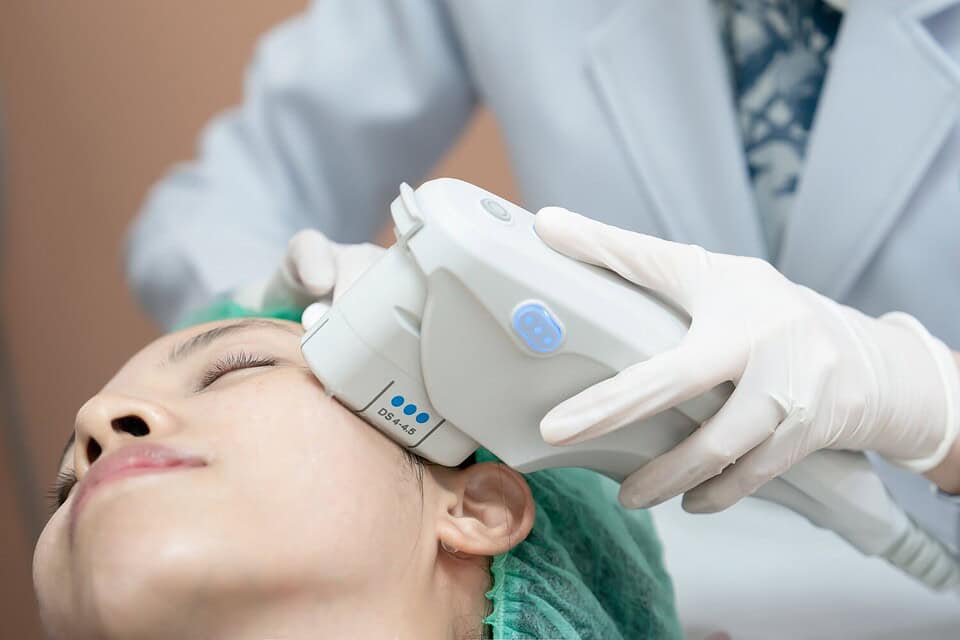
Ways to Remove a Birthmark

Nowadays, there are several safe and effective birthmark removal methods available. We’ll explore the different types of birthmarks and how they can be effectively removed.
Classes of Birthmarks
There are two main classes of birthmarks. Red birthmarks (vascular) occur when there’s a concentration of blood vessels in the skin. Blue or brown birthmarks (melanocytic) are the result of a concentration of pigment cells or melanocytes.
Five of the most common types of birthmarks include:
- Café au lait spots (melanocytic)
- Facial dermal melanocytosis (melanocytic)
- Mongolian spots (melanocytic)
- Port-wine stains (vascular)
- Strawberry hemangiomas (vascular)
Home Remedies
Before we get into the various professional treatments available, there are some inexpensive and harmless ways to remove a birthmark that are worth a try. These two treatments can lighten melanocytic birthmarks to the point where they may become unnoticeable.
Lemon juice has been used for ages to decrease the visibility of freckles and lighten hair when exposed to sunlight. Olive oil has also been used for centuries as a natural moisturizer, and people have noticed that it has also lightened and removed birthmarks, moles and freckles.
Simply apply a few drops of either remedy on the birthmark and leave it to soak in for about thirty minutes. Wash it off with warm water, dry the area, and repeat at least three times a day for a few days to a week to see if it makes a difference to the visibility of your birthmark.
Medications for Birthmark Removal
There are several ways to remove a birthmark using medicines. One of the most effective and widely prescribed medications is propranolol, which is also commonly used to treat high blood pressure. Propranolol, a beta-blocker, can also be used to stop hemangioma birthmarks that appear in infants.
Studies have shown that beta-blockers are excellent at lessening the visibility of vascular birthmarks by reducing the blood to the birthmark area and shrinking the blood vessels. Some of the other medications used to treat birthmarks include:
- Corticosteroids
- Interferon
- Timolol
Some of these medications work well only on children and infants. A dermatologist can prescribe the best treatment for your specific birthmark.
Surgical Birthmark Removal
Many melanocytic birthmarks simply resist any non-invasive treatments such as laser therapy and medicine. The only way to treat these stubborn birthmarks is through birthmark removal surgery. It’s often the best and safest way to treat many mole-like birthmarks, as these can develop into cancerous moles if left untreated.
There are two main surgical methods used to remove melanocytic birthmarks. Depending on your particular case, your doctor can use cryotherapy to freeze your birthmark before removing it. Liquid nitrogen is applied to the surface of the birthmark and left for a few minutes to freeze. The birthmark is then excised from the surface of the skin, leaving a shallow wound. New unblemished skin forms and eventually takes the place of the excised birthmark.
The doctor can also choose to cut out the birthmark from the roots. This is the most effective treatment for melanocytic birthmarks judged to be in danger of developing cancer.

Laser Therapy
One of the least invasive methods of birthmark removal uses highly concentrated laser beams to erase the blemishes from your skin. Laser therapy can be used to treat a range of different types of birthmarks, including the five most common ones. Vascular birthmarks are treated by targeting the blood vessels lying just underneath the skin and cauterizing them, cutting off blood flow to the vessels. Laser therapy of melanocytic birthmarks focuses on decreasing the concentration of melanin by using pigment-selective lasers.
Some birthmarks cannot be removed completely, but by repeated laser therapy sessions, they can fade and become much less prominent and noticeable. Laser therapy can take several sessions, but eventually it can leave a smooth and flawless, birthmark-free, complexion.
Visit Nirunda Aesthetic Clinic
Nirunda Aesthetic Clinic in Bangkok offers medicines, surgery and laser therapy to safely and effectively remove birthmarks from children and adults. Please make an appointment with us for an initial examination and consultation, and so we can recommend the best birthmark removal treatment for you.






